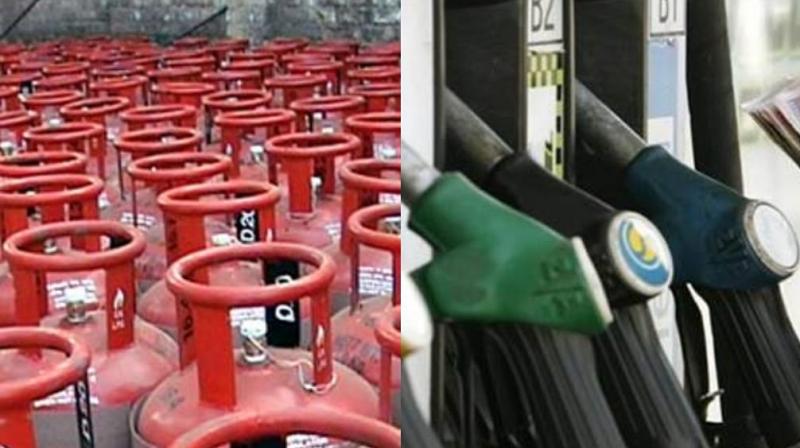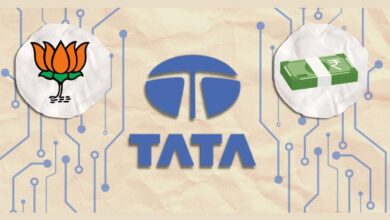Decoding The Price Puzzle in India, A Closer Look at Rising Costs Of Essential Commodities And Services, What’s A Common Man To Do?
In India, the steady surge in prices of essential commodities and services has become a matter of growing concern for the common citizen. The financial strain on individuals is palpable, from the soaring cost of gas cylinders, fuel prices, and food inflation to the imminent rise in critical medicine prices, coupled with increasing insurance premiums and electricity bills, hence balancing the budget has become an uphill battle in contrast to the ever-rising living cost in India. Also contributing to this intricate web is the rising influence of monopolistic giants, a double-edged sword of the likes of the Ambanis and Adanis!

The Rising Cost Of Living In India
The cost of basic commodities and essential services in India has experienced a noticeable upward trajectory, leaving citizens grappling with the economic strain. From the increasing prices of food and dairy products to escalating medical expenses and fuel costs, the challenges of maintaining an affordable standard of living have become more daunting.

Life’s necessities have always come at a price, but in recent times, that price seems to be on an unstoppable climb. From the everyday essentials like food and dairy to critical needs such as medicines and healthcare, Indians are finding it increasingly challenging to manage their budgets.
Let’s take a look at the evil rising costs of some basic needs
The Steep Climb of Food and Dairy Prices
As we sit down to our meals, we might not always realize the intricate dance that happens behind the scenes before the food reaches our plates.
The price surge in food commodities is not just about a simple case of supply and demand; instead, it’s a symphony of complex factors playing out in the background.
Weather unpredictability impacts crop yields, leading to shortages that drive prices upward; supply chain disruptions, from farm to fork, further aggravate the situation. A country such as India that heavily relies on agriculture can find itself vulnerable to these shifts as this isn’t just about numbers; it’s about the farmer’s labour, the supply chain worker’s toil, and the consumer’s struggle to put food on the table in between is the government!
The Medicine Dilemma and Healthcare Woes
Amidst the rising hum of food prices, there’s another theme playing – the soaring cost of medicines and healthcare. When we’re unwell, we turn to medication for relief, but lately, even that relief comes at a price!
The reasons behind this increase are multifaceted. As much as we may wish otherwise, the hospital bed, the doctor’s prescription, and the medical bill are all intricately connected by an invisible thread of costs. It’s not just about financial burdens but about the health and well-being of individuals and families.
Fuel and Transportation
As we move from the dining table to the road, we’re met with yet another challenge: fuel prices’ unsteady dance. The price of fuel is the heartbeat of the economy, a rhythm that affects everything from daily commutes to the cost of goods on the market shelf.
Global oil prices, domestic taxes, and transportation costs are all tangled in a web that affects how we move and how much we pay for it. The cost of that tank of gas isn’t just numbers ticking on the pump; it’s the journey to work, the drive to see loved ones and the connection to the world around us.

The Weight of Rising Living Costs
Beyond the individual pieces of the puzzle, there’s a bigger picture: the rising cost of living. It’s not just about food, medicine, or fuel; it’s about the very fabric of our lives.
Homes have become more expensive, education feels like a luxury, and recreation often comes with a hefty price tag. The urban jungle, where many of us reside, can be especially relentless. A roof over our heads, a good education for our children, and a little leisure to unwind all come at a price that often feels like an uphill battle.
So what could be the reasons behind this relentless surge in prices, and understand the factors at play?
Global Price Dynamics
The assertion that price hikes are a global phenomenon rings true. As we probe the reasons behind these increases, it becomes evident that the world at large is experiencing shifts in its economic landscape.
Economic interdependencies, supply chain disruptions, geopolitical tensions, and inflationary pressures all contribute to a more intricate pricing picture. The repercussions of losses incurred over decades are being felt now, resulting in a need to balance the scales of economic sustainability.
Socialization of Losses By Indian Governments
A key contributor to the current price surge is the socialization of losses; for example, Yes Bank Or Vijay Mallya’s debt, poorly managed banks and government entities that required excessive bailouts have played a role in redistributing financial burdens onto the general populace, aka citizens.
When entities are bailed out, be they financial institutions or indebted magnates, the ultimate price is paid by ordinary citizens. Inflation and higher taxes are the mechanisms through which these costs are recouped.

Inflation’s Changing Face
While inflation may appear low by numerical standards, its impact is shifting in subtle ways. The conventional understanding of inflation as a uniform percentage increase in prices is being challenged.
The nuanced reality is that certain sectors witness fluctuations that defy the average inflation rate. For instance, even as wedding inflation decreases, prices in other domains might continue to rise. The seemingly modest figures of 3% or 4% inflation can belie the fact that specific price increases are considerably higher.
The Multifaceted Tax Structure
Direct taxes, such as personal income tax, and indirect taxes, exemplified by the Goods and Services Tax (GST), contribute to the overall fiscal framework.
However, there also exist invisible high taxes and the insidious impact of inflation, and this complex combination can create a mirage of control over inflation while allowing the overall price increase to spiral unchecked. The challenge lies in deciphering these intricate fiscal manoeuvres and comprehending their cumulative effect on consumers’ wallets.
The Rise of Monopolistic Corporates
The winds of change are sweeping across India’s economic landscape, but these winds carry with them a double-edged sword. While progress is evident in the form of giant corporations like Adani and Ambani, their growing dominance has raised concerns about the survival of small retailers and street hawkers and also shed light on the role of government policies that may inadvertently contribute to this challenging situation.
The ascent of conglomerates like Adani and Ambani is a testament to India’s economic growth. However, concerns arise when their influence extends to an extent where competition dwindles, leaving a few major players to dictate prices and access to resources. Such a scenario can lead to monopolistic control, stifling market competition and causing smaller retailers and hawkers to struggle to survive.
Questioning Government Mandates and Policies
While the government’s intention might be to encourage economic growth, the policies that facilitate the expansion of these corporate giants can inadvertently squeeze out smaller players.
Grants of land, regulatory favours, and exclusive rights in certain sectors might bolster these conglomerates, but they can simultaneously weaken the ecosystem for local retailers and entrepreneurs. The power dynamic shifts in favour of these giants, often leading to an unequal market playing field.
Impact on Small Retailers and Hawkers
The impact of these changes reverberates through the grassroots level of the economy. Small retailers, often operating on the margins, find it increasingly difficult to compete against the pricing and resources of these mammoth corporations. Street hawkers, who are an integral part of Indian culture and livelihood, face displacement as commercial spaces get occupied by larger players.
Struggling for Survival
The narrative of local retailers and hawkers isn’t just about business; it’s about the individuals and families who have relied on these trades for generations. The rising dominance of monopolistic corporations can lead to a loss of livelihoods, economic displacement, and an erosion of local identities. The fight for survival becomes a fight for preserving community bonds, traditions, and the diversity that smaller businesses bring to the market.
A Call for Balanced Policies
Addressing this situation requires a nuanced approach. Economic growth is essential, but it shouldn’t come at the cost of wiping out smaller retailers and hawkers. Policies should be designed to promote healthy competition, ensure fair access to resources, and protect the interests of local businesses. Balancing the scales between conglomerates and small entrepreneurs is crucial for a resilient and inclusive economy.
Seeking Solutions, Personal
To navigate this intricate landscape, a multifaceted approach is essential. Beyond mere attempts to save money, individuals must focus on asset ownership and wealth creation. Recognizing that taxes, whether direct or indirect, often paint an incomplete picture is the first step, and a holistic understanding of inflation’s evolving nature is equally crucial.

Navigating the Challenge Ahead
At a personal level, in these times of escalating price hikes, it becomes vital to equip ourselves with both knowledge and practical strategies and to understand the complexities behind these rising prices that can help us make informed decisions.
Role Of Governments
The role of the Indian government and economic experts is equally important, if not more, for they are the ones that make policies for the country and the citizens to follow; hence they must prioritize transparency in communicating these complex dynamics to the public, thus, promoting an environment of informed decision-making.
By supporting transparent policies and accountability within sectors like agriculture, healthcare, transportation, education, etc. and not putting it in the hands of a few conglomerates is crucial for creating a more balanced economic environment.
The Last Bit, As the rising living costs continue to unfold, it’s evident that these challenges are more than just figures on a bill; they’re the stories of hard work, health, and daily life for millions of Indians.
The price surge is not a one-dimensional issue with a singular cause; instead, it is an intricate web of global economic shifts, socialized losses, complex tax structures, and the evolving nature of inflation.
As the Indian economic landscape transforms, it’s vital to acknowledge the unintended consequences of policies that propel monopolistic giants. While conglomerates like Adani and Ambani contribute to economic growth, they also hold the potential to stifle competition, leaving smaller entrepreneurs vulnerable; perhaps somewhere, the Indian government is to blame!




